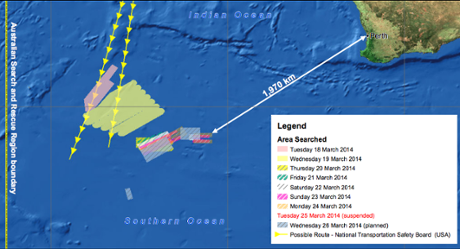I'm surprised the PM is calling it game over without recovering any debris or even putting eyes on anything other than a few grainy satellite pictures. He better hope he's right.
The Chinese are reported as insisting that they be allowed to review the satellite ping data and analysis to confirm the British finding.
The Chinese Deputy Foreign Minister there is demanding to know exactly how the Malaysians made the decision.
The US believed it to the point of committing subsurface search resources, the Australians are doing the same, committing the Ocean Shield, capable of black box searching.
http://en.wikipedia.org/wiki/ADV_Ocean_Shield
The basis for the decision is clearly another first in aviation history.
MH370 has been filled with them.

PS - in a reply to the Chinese complaint that the satellite finding took so long, Hishammuddin said: "Can I also remind you that we received satellite data from China involving 'sightings' in the South China Sea, which made us detract ourselves from the search and rescue to search areas we already searched, and it was found to be negative."




 I don't always make myself very clear and not had much sleep recently either.
I don't always make myself very clear and not had much sleep recently either.